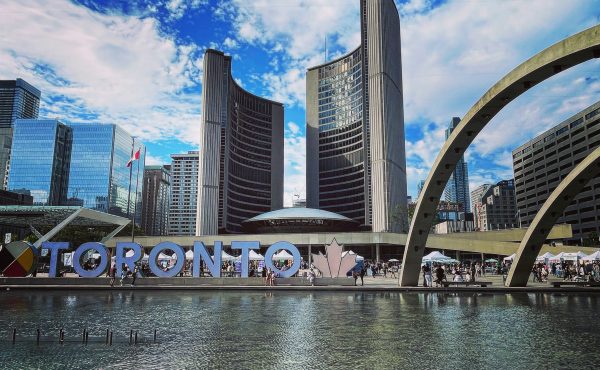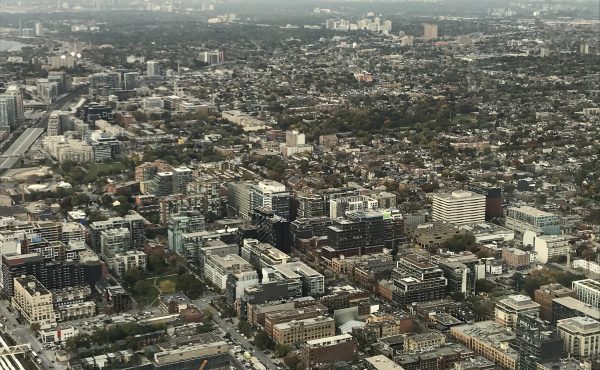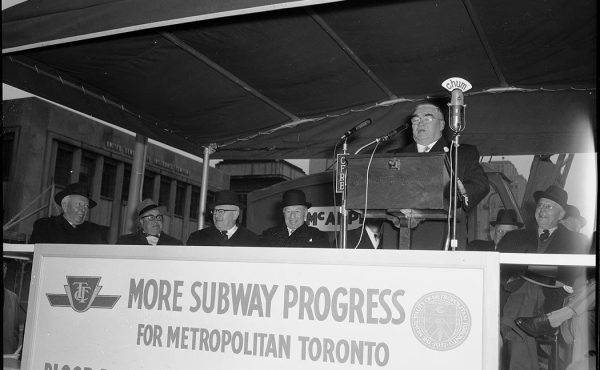Mayor Ford’s obsession with the Sheppard subway may have inadvertently broken open the political conundrum of sustained long-term funding for transit infrastructure in the GTA and Hamilton.
It’s easy to forget that the $8.4 billion for new transit infrastructure that Toronto’s mayor and council are currently fighting over is intended to be just a downpayment. In Metrolinx’s “The Big Move” plan, these funds are merely there to kick-start a much bigger, GTA-wide system of new transit lines that will be funded by the region itself.
Metrolinx is supposed to come up with a plan for this funding by 2013, to the tune of at least $2 billion a year (yes, there is that much transit that needs building). There’s no doubt this plan will have to involve significantly increased revenue generation — that is, taxes and fees — and the prospect of releasing such plans to the public has been a cause of considerable apprehension, to say the least, in political and expert circles. The plan’s deadline was, in fact, delayed to 2013 so that it wouldn’t be an issue in the provincial election.
Last year, the CivicAction group (previously known as the Toronto City Summit Alliance) released a study detailing potential revenue generation tools for transit (PDF) (disclosure: I was a member of the working group). There were quite a few options, but the major ones were two or more of: parking levies, highway tolls, a regional sales tax, and a regional gas tax. At the large workshop convened to discuss this study, which included transit experts, businesspeople, activists and politicians, one of the key questions asked was how to get the public onside. While there was general agreement that the new revenue was necessary, no-one could really articulate a solution for getting public support. It seemed like an insurmountable hurdle.
Certainly, no-one suggested electing a rabidly pro-car mayor and then backing him into a corner where he had to find a way to pay for an impractical subway. But it turns out that might in fact be the solution.
Last week, Mayor Ford wrote an op-ed in The Globe and Mail in which he suggested a parking levy for Toronto to pay for his subway. While the amount he suggested is nowhere near sufficient, as Christopher Hume notes in the Toronto Star and John Lorinc pointed out on this blog the fact that the most pro-car politician in the city has said that a fee on parking to pay for transit is thinkable effectively breaks the logjam. Politicians can now talk publicly about raising taxes and fees to pay for new transit, where a few weeks ago that was a no-go area for most of them. It’s no longer a question of if we do it, but how (i.e. which revenue sources we use, and how we spend it).
Indeed, the same day, Councillor Norm Kelly, a Ford supporter, proposed a more substantial 0.5% regional sales tax to pay for new transit. Raising a local sales tax has been a common way to pay for new transit infrastructure in US cities, where it has often been accepted by the public via a referendum (for example, Oklahoma City and Los Angeles).
Road tolls seem to be out of the question, but that’s not a problem – they more expensive and complicated to set up, and at the moment Metrolinx could only set them up on highways, creating the complication of pushing traffic to local roads. A comprehensive parking levy in many ways captures the same thing, people’s car travel — people have to park at their destination — but applies across the region and all travel routes. And while gas taxes already capture at least some of the cost of using roads, as Donald Shoup famously pointed out in “The High Cost of Free Parking” (PDF of the original article) a lot of public parking outside the downtown is still vastly underpriced for the valuable urban space it takes up.
The upshot is, now that its strongest potential opponents are themselves talking about what revenue tools to use to pay for new transit infrastructure, it will be a lot easier for Metrolinx to propose a viable revenue plan next year. Of course, if we do start raising revenue, a under-used subway on Sheppard is probably not the best way to spend it. But that’s another discussion.






5 comments
Before this discussion gets taken completely off course drop the allusion to “under utilized” Sheppard Subway. It’s a piece of a subway, It goes from Yonge to Don Mills. That was never the plan. There is an unfinished transit hub at Scarborough Town Ctr where the Subway would link with GO rail and GO bus, where bus feeder service from all over Scarborough would be about 20-30 mins from rapid transit. But you have to finish it. Development is huge even on the little piece of the Sheppard Subway that has been built. Let’s assume for the purpose of this post that the TTC planners that put together the transit strategy for Toronto in 1986 actually knew what they were doing so that we can get back to the subject at hand. This kind of user pay scenario to fund transit at the regional level is a reasonable proposition. Tarifing property taxes is unfair and non sustainable. By placing a VAT tax on specific assets so that a user pays (hypothetically) for the amount of service they consume is ultimately fair. We pay for mass transit at the fare box on top of the subsidies that we pay out of taxes. It is not unreasonable to expect people who are consuming our roads during their daily commute and urban space to park as well as consuming gasoline to get there shouldn’t expect to contribute something for the privilege of driving in a densely populated urban area.
Adding to Patrick Sherman’s comments about the unrealized state of the Sheppard subway . . . it should connect not only in the east with Scarborough Town Centre, but in the west with the Spadina line at the Downsview station. However, it’s folly to stop there. I would extend the line even further west to Downsview Park, which has enormous development potential. Only someone wearing blinkers would assume that this underutilized brownfields will remain in its current neglected condition. A further benefit of pushing the Sheppard line westwards is that it will take the pressure off of Finch Ave. West.
Of course, development will also continue to intensify in the area of the GTA to the north of Toronto. A city-wide Sheppard subway line would constitute a transit backbone serving this entire region. In contrast, building a subway along Eglinton would be less useful, as its proximity to the Bloor-Danforth subway line would duplicate the latter’s functionality to a certain extent. I cannot deny that an extended Sheppard subway line will cost an arm and a leg; yet if we wait a few decades the amounts will hardly go down.
Comments #1 and #2… build ALL the subways! I expect comment #4 to feature the DRL.
comment #4, now let us build DRL
” a lot of public parking outside the downtown is still vastly underpriced for the valuable urban space it takes up.”
He didn’t limit his observation to public parking *outside* the downtown. In fact, downtown public parking is very much underpriced.
The other interesting aspect of Shoup’s work is that for all the talk of implementing a congestion charge, raising parking rates (if you go high enough) could have the same impact as a congestion charge, but without all the technical and bureaucratic details of implementing and collecting a congestion fee.